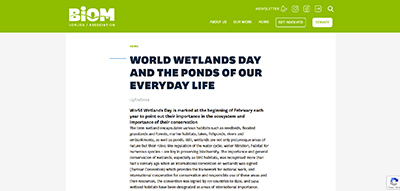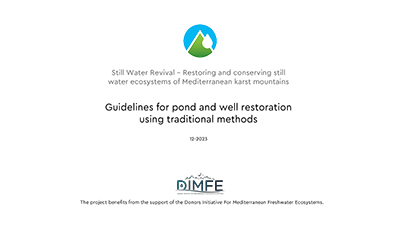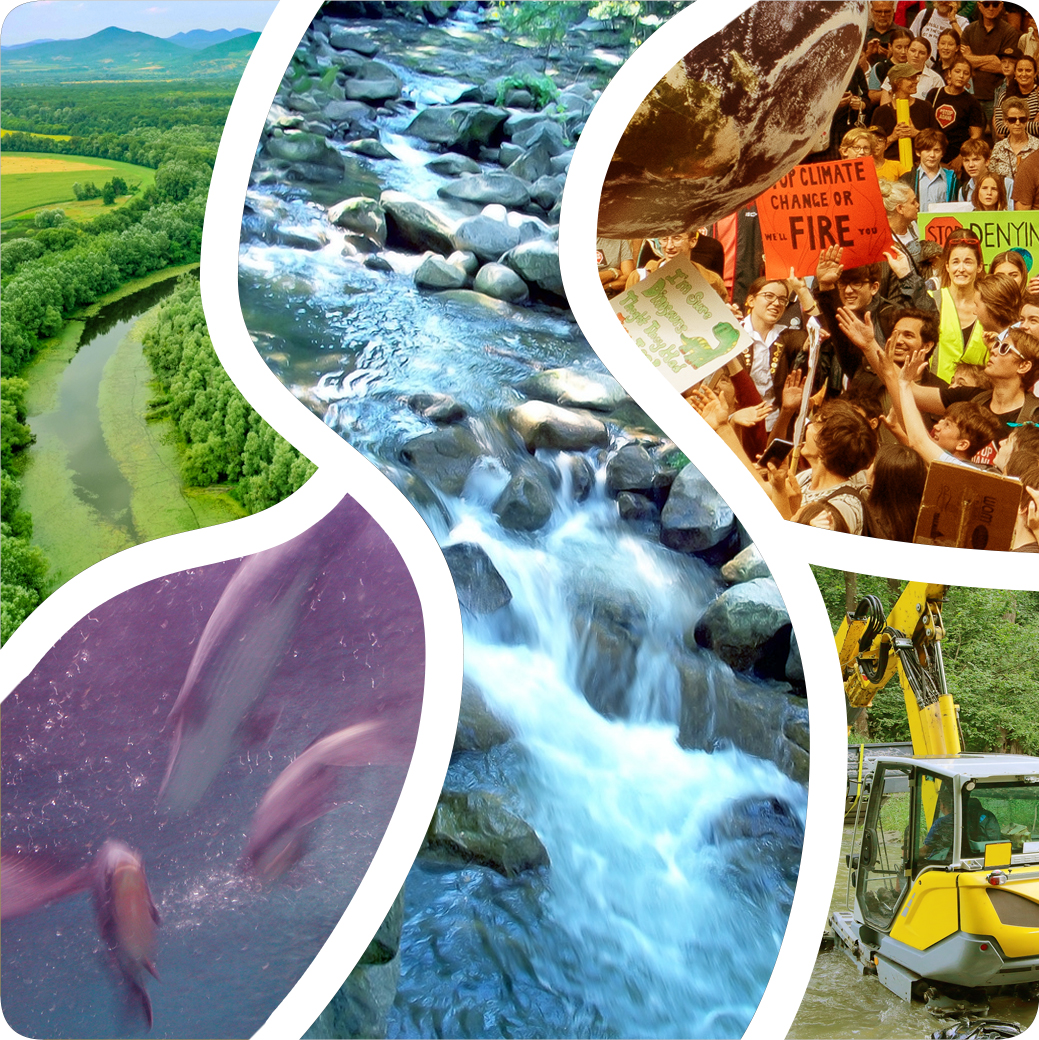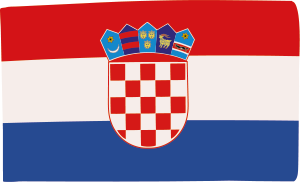Luka Škunca
Project Manager Association Biom - BirdLife Croatia
NGOs & Civil Society

My Projects
 Dinara back to LIFE - In the past 12 years I have been working on many projects and initiatives but recently the most prominent was Dinara back to LIFE project which was the first bigger grassland restoration project in Croatia which has prepared the ground for broadening the scope to many other areas and has also tested the restoration methodologies that are now being mainstreamed in the nature protection sector in Croatia.
Dinara back to LIFE - In the past 12 years I have been working on many projects and initiatives but recently the most prominent was Dinara back to LIFE project which was the first bigger grassland restoration project in Croatia which has prepared the ground for broadening the scope to many other areas and has also tested the restoration methodologies that are now being mainstreamed in the nature protection sector in Croatia.
- Key project facts
The ‘Still Water Revival’ project enabled us to work with local communities of shepherds, as well as land managers, in order to map, asses the ecological status and prioritize ponds and wells for restoration. We also managed to restore more than 20 ponds and wells in 4 mountains and implement there a caretaker program that will ensure a long-term care for them.
- What impact did these projects have on biodiversity, if any?
Ensured the long term persistence of the habitat itself.
- What work challenges did you face and what approach did you take to solve them?
My main tasks are coordinating the project partnership so everything is going smoothly and, even though the partnership is spread across half of Croatia, we were able to meet regularly online which proved to be more than adequate for our needs. I'm also in charge of developing methodologies and protocols for ecological assessment and prioritization. Since the idea was to create a simple and quick methodology for assessment that can be used even by someone without a biology expertise, the methodology was based on visual interpretation of physical characteristics of the pond or well and presence of water, vegetation and different types of fauna. The long-term goal is for the methodology to be used as a first step by anyone that wants to start a pond or well restoration project, particularly Public institutions that manage protected areas, where objects to restore abound.
- What lessons learned are transferable to other places/projects?
Tailor expectations and the tools you plan to use to the possibilities of your partners and stakeholders. No point in having a great methodology or protocol if it is too sophisticated or incomprehensible for others to implement.
Projects should be adaptable and flexible (within reasonable boundaries) and much better results can be achieved when you adapt finances, activities and goals as you progress with a project, particularly when faced with a significant revelation.
- Is there anything you would do differently if you could do it all over again?
I'm not from the area we work in and I did not grow up in a rural setting, so I lack a lot of common knowledge that someone who grew up in a village has. Although I can learn the local dialect, I will never be someone local, but I am slowly working on my knowledge of village life, customs and skills that can bring me closer to the local community.
My Focus and Approach
- Lessons Learnt - Some recommendations for others?
- What’s most important:
It is not the size of the ecosystem that is important, but their function
- Do this, not that:
Involve local communities in the inception of the project, they can then help you atriculate the problem better, which is the first step in finding a solution
- Always start by:
Explaining what you want to acheive, it sets the scene for every discussion
- What to do when things get difficult…:
Being open, transparent about your gaoals and consistent, and you'll acheive a rare quality - integrity
- 5 simple steps to:
- Decide what you want to restore and why.
- Ask your stakeholders what they would want.
- See if there is some overlap between these two wants.
- Assign points based on both of your needs to the potential restoration objects.
- Argument the selection of the priorities for restoration.
- The biggest barrier and what I am trying to do about it:
I'm not from the area we work in and I did not grow up in a rural setting, so I lack a lot of common knowledge that someone who grew up in a village has. Although I can learn the local dialect, I will never be someone local, but I am slowly working on my knowledge of village life, customs and skills that can bring me closer to the local community.
- What’s most important:
My Journey
- My current role:
Project Manager at Association Biom.
- My journey:
I studied environmental sciences at the University of Zagreb and had always have an interest in botany. My first serious job was impact assessment studies in a private company, where I also rediscovered my love of maps. I .working in Biom on dry grassland restoration project on Dinara which helped us realize that we can contribute to grassland restoration, and connect with the local communities, far better if we also restore ponds and wells that for centuries were the only water source on our karstic mountains. And that is how I became the project manager of the Still Water Revival project
- My Education:
Faculty of biology, University of Zagreb, Master in Environmental sciences.
- The Big Change:
Working with local people who live with and for their animals, you realize that a desktop approach to nature conservation that was dominantly present during my university days is very limited and ignorant. And we both most often have the same goal, so it would be easier and more efficient if we work together. This also enabled me to understand that excluding human influence from nature is as detrimental as having too much human impact.
- Favourite part of the work I do:
Seeing a drastic improvement in the quality of water and the surroundings of a successfully restored pond or well, that goes from a neglected part of the wider landscape to being a hospot for wild and domestic fauna.
Interview
Key Topics:
Key Topics
These relate to specific topics (e.g. technical solutions; restoration activities etc.) addressed within the showcase materials.
- Long term caretake
- Ecological assessment
- Prioritization
Prone2Success Factors Demonstrated:
Prone2Success Factors Demonstrated
These are the Prone2Success checklist factors which are highlighted within this showcase. More information on the Prone2Success checklist can be found here.
- Communicate/engage with stakeholders from the outset
- Ensure stakeholder understanding / education of restoration goals & benefits
NRL Restoration Categories:
NRL Restoration Categories
These are the restoration categories (listed under Annex VII of the European Nature Restoration Law (NRL) which are relevant to this showcase.
- [22] Improve connectivity across habitats
Was this information useful?
No
Thank you for submitting feedback.
Click here to share your thoughts
Resources
Articles
 Dinara’s restored pools and wells - The Still Water Revival Project, dedicated to the restoration of neglected water bodies in the regions of Biokovo, Dinara, North Velebit, and Učka, is still. ongoing
Dinara’s restored pools and wells - The Still Water Revival Project, dedicated to the restoration of neglected water bodies in the regions of Biokovo, Dinara, North Velebit, and Učka, is still. ongoing
 World Wetlands Day and the ponds of our everyday life - World Wetlands Day is marked at the beginning of February each year to point out their importance in the ecosystem and importance of their conservation.
World Wetlands Day and the ponds of our everyday life - World Wetlands Day is marked at the beginning of February each year to point out their importance in the ecosystem and importance of their conservation.
 The beginning of the Still Water Revival Project for the restoration of wells and ponds in the karst mountains - Water bodies in the Croatian karst mountains are a focal point of biodiversity, but in recent decades they have been exposed to deterioration. We are partners in a new project that will reverse this process.
The beginning of the Still Water Revival Project for the restoration of wells and ponds in the karst mountains - Water bodies in the Croatian karst mountains are a focal point of biodiversity, but in recent decades they have been exposed to deterioration. We are partners in a new project that will reverse this process.
Presentations
 Still Water Revival – Restoring and conserving still water ecosystems of Mediterranean karst mountains - Guidelines for pond and well restoration using traditional methods
Still Water Revival – Restoring and conserving still water ecosystems of Mediterranean karst mountains - Guidelines for pond and well restoration using traditional methods
Acknowledgements & Links
I have to thank my project team in Biom (Zdravko Budimir, Tanja Starčević, Tomislav Sotinac, Ivan Budinski and Melani Glavinić), as most of the results were achieved thanks to their efforts.


